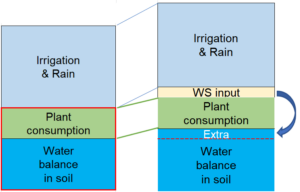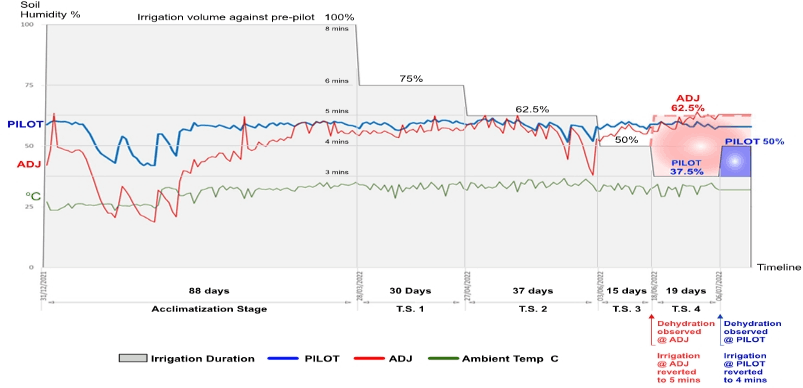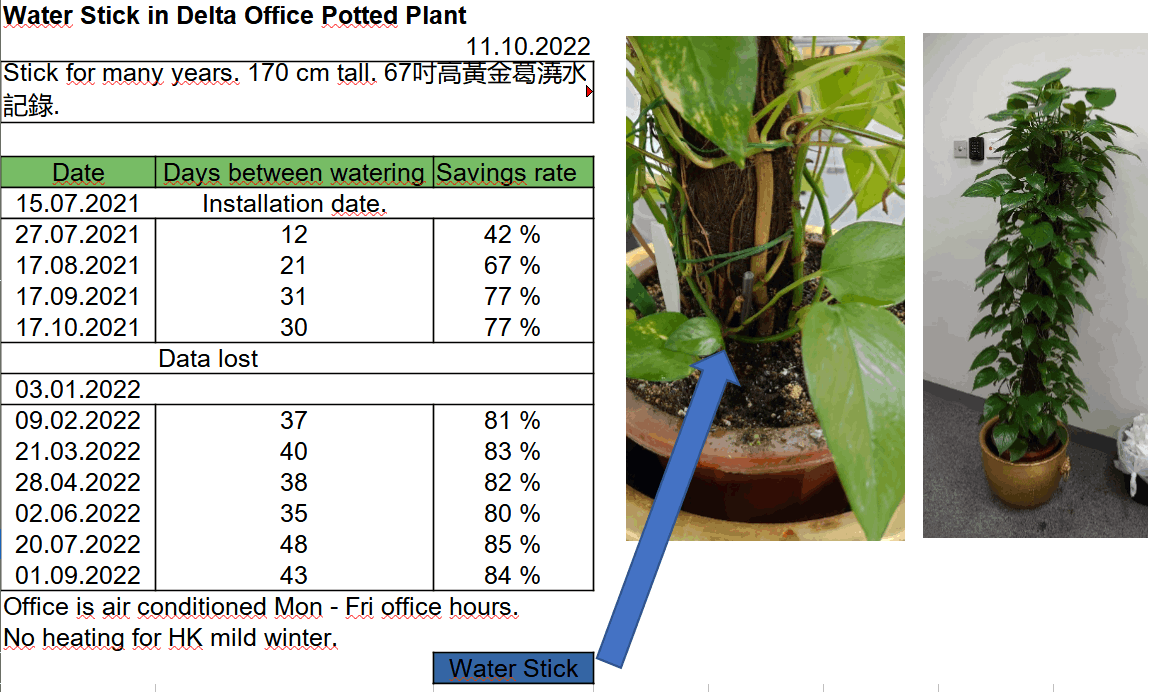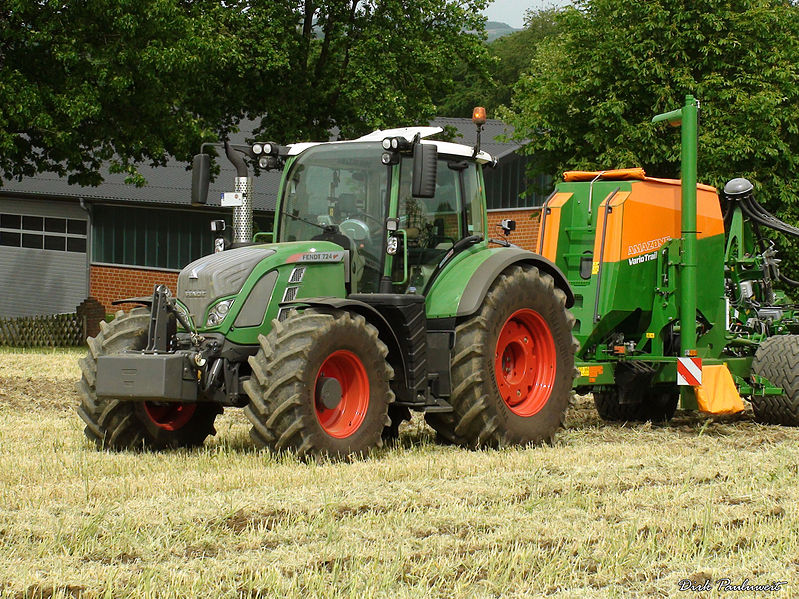
A trial was conducted with two adjacent lawns, with one lawn equipped with Water-Saver'n (WS) to verify water savings potential. The environmental conditions for the two lawns are identical because they are adjacent to each other. Soil moisture was measured at two soil depths to detect changes in conditions.
In the initial phase (period 1), the plot with WS had higher soil moisture than the normal plot. Beginning in period 2, when the amount of irrigation was reduced for both lawns, moisture content in the normal plot increased to nearly the same level as WS. Observations showed that the turf of the normal plot showed signs of stress. A stressed plant absorbs less water and leaves more water in the soil. During a dry period, the soil water content of both plots decreased, with the normal plot losing more water than the WS.
At the end of the dry period, the difference in moisture content between the two plots increased. During this period, the WS were shown to be able to add additional water to the soil from the air even under drier humidity conditions. The Water-Savers (WS) save at least 37% on irrigation in the first part of the trial.
To prevent further deterioration of the normal plot turf, the irrigation water volume for WS is reduced to 50% only after the third period. Gradually reduce WS irrigation until there are signs of plant stress.
Final Report
Comparison of soil moisture between pilot lawn with Water-Saver (WS) and adjacent lawn (without WS).

Result: 50% water saving
Water saver test for indoor plants


